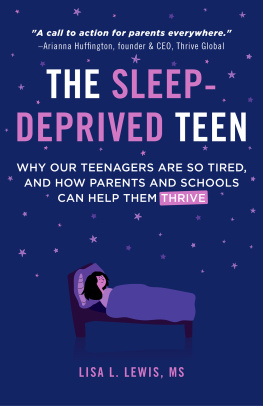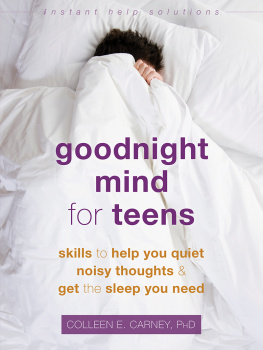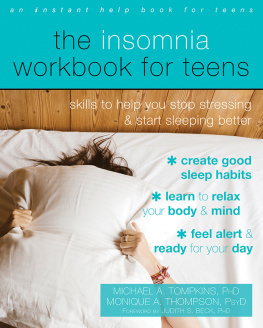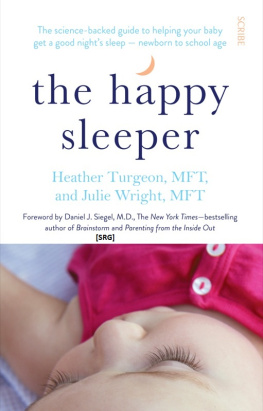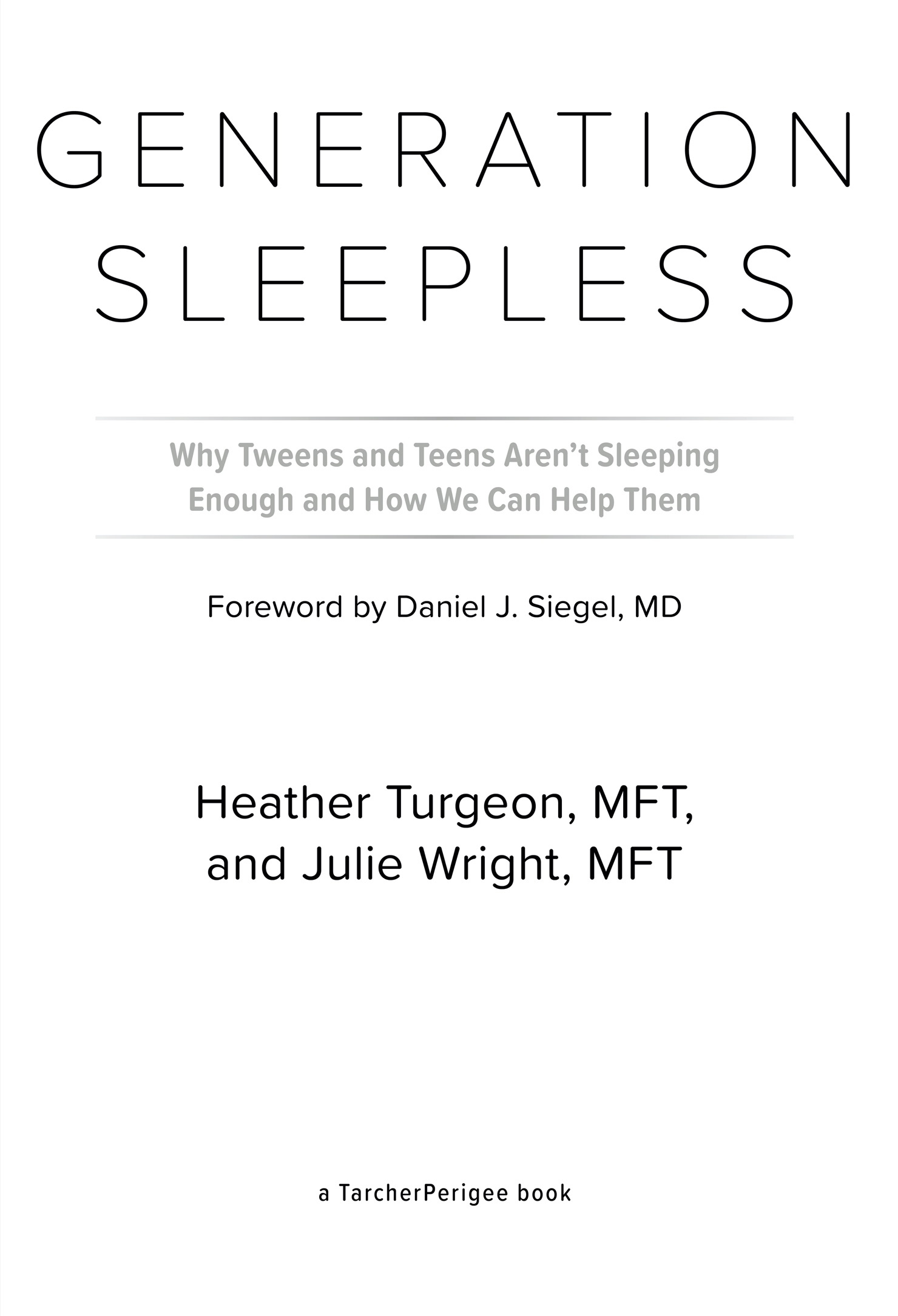Penguin supports copyright. Copyright fuels creativity, encourages diverse voices, promotes free speech, and creates a vibrant culture. Thank you for buying an authorized edition of this book and for complying with copyright laws by not reproducing, scanning, or distributing any part of it in any form without permission. You are supporting writers and allowing Penguin to continue to publish books for every reader.
Book design by Laura K. Corless, adapted for ebook by Estelle Malmed
Foreword
If you are reading these words, you are awake. And if you are awake, the brain inside your skull is busy building up by-products of all the electrochemical energy streaming through the massively interwoven networks of neural systems that help us pay attention, be aware, remember, feel, think, and behave. Imagine what might happen if that accumulation of the days leftover chemicals inside your head were not able to be cleaned up and removed. What a mess that would be! It would be as if you were the host of a party, passing out beverages and snacks, and were unable to clean up the celebratory garbage that remained.
Now imagine if that brain inside you was that of an adolescent. During this important period of brain remodeling, unused neural connections are being pruned away and, later on, enhancements in connectivity will be created by laying down a powerful sheath, myelin, to increase the speed and coordination of neural activity. This pruning and myelin formation are the basis of the important reconstruction process that characterizes our brains busy growth process during the teen years and beyond, long into our twenties.
For proper brain function and growth to occur, the by-products of neural activity must be cleaned out on a regular basis. How does that cleaning occur? During sleep. Sleeping well and long enough to enable the cleanup crew of supportive glial cells to do their crucial detoxifying work is essential for teenagers to be able to effectively focus their attention, remember, think, make decisions, regulate their emotions, and interact with others. Sleep also is vital for teens to metabolize food well and prevent overeating, obesity, and the risk of illnesses such as diabetes. As if that were not enough to get us to hop into bed right now and catch some sleep, we also know that sleeping well and long enough reduces life-threatening systemic inflammation in our bodies.
Heather Turgeon and Julie Wright are the sleep whisperers who have created this science-backed, practical tip-packed guide to understanding sleep and creating a full and healthy life for our adolescents (and younger kids, as well as ourselves). Their work is not only creative and compelling, it is a contribution exactly when we need itat a time when mental health challenges have never been higher. In modern times, not just during a viral pandemic, but simply in the VUCA times in which we liveVUCA being an acronym for the volatile, uncertain, complex, and ambiguous moment of contemporary cultural lifewe are faced with social disconnection and unrest, emotional stress and worry, and internal processes of despair and confusion that make sleep even more a priority than ever. Add to this state of affairs the digital, electrically powered lives of social media that draw our social brains into states of feeling inadequate and left out, and leave our visually based brains activated with intense light at night when the brain is ready for sleep. Taken together, its a prescription for disaster.
Generation Sleepless applies as much for adolescents in their important period of brain growth and remodeling as it does for us adults who care for teens, by using our minds capacity to be resilient and collaborative. With huge numbers of youth getting inadequate amounts and quality of sleep, mental and medical health are compromised. With our minds unable to function at their optimum, we lose the ability to stay clear and focused in our attention, to think deeply about a problem we are trying to solve or a decision we need to make, and to remember the vital information we are learning at school and at home. Our relational lives suffer as well, as our emotions are set to threat mode and we can fly off the handle more easily and rupture our interpersonal connections. As adolescents are profoundly social beings, with being connected equated with survival, this relational friction can lead to more isolation and despair, impairing quality sleep with the ensuing stress of a life disconnected, and the cycle is in a downward spiral.
Enter our intrepid sleep whisperers. With compassion and creativity, Turgeon and Wright meet us where we are, understanding the challenges of modern adolescents and their parents, and offering practical strategies and accessible tools that can help us all gain the benefits of a good nights sleep. Youll learn in these powerful pages the science of sleeplessness, the benefits of good sleep, the ways in which schools and other entities that support teens can become sleep-friendly, and the skills to change your life habits at home to make a more sleep-wise environment. Just imagine the benefits for us as parents to learn the fundamentals of sleep that empower us to make such a huge difference in our adolescents lives now, and for decades to come. Yes, its a practical dream come true, when sleep allows our creativity and memory consolidation to flourish. You have the choice right in front of you. Will you prioritize sleep for your teen just as you would their safety and health? The lessons to turn possibility into reality are here in this marvelous book. Think about this decision to honor the well-being of your family. Before you decide, you may simply want to sleep on it and enjoy the fruits of prioritizing sleep for everyone!
Daniel J. Siegel, MD
1
The Great Sleep Recession
What if you knew that one simple daily habit would boost your teenagers mental health threefold, improve their grades and love of school, make them a better athlete, dramatically reduce their stress and anxiety, cut their chances of getting in a car accident in half, and ward off chronic health conditions like type 2 diabetes, obesity, and cancer? And what if this practice cost nothing and was completely natural? No downsidesonly upsides to everything you care about in your teenagers life.
Of course youd start today.
The irony is that we have this powerful panacea available to us at this very moment, and every day we systematically neglect it. Yes, youve guessed it. Its the life-fueling practice of sleepand our teenagers are in the midst of the worst case of deprivation experienced by any population in history.
Modern-day teens are the most sleep-deprived group of any individuals the world has ever seen: while the majority of elementary school kids get the optimal amount of sleep on most nights, that number drops to about 30 percent by middle school, and by their senior year, only 5 percent of teens get optimal sleep on school nights. And the numbers keep slipping. In 2015, 58 percent more teenagers were severely sleep deprived than in 1991. A recent survey of sixty thousand American high school students measured how well teens are faring in terms of basic health recommendations for sleep, screen use, and exercise. Only 3 percent of girls and 7 percent of boys reached these targets.






